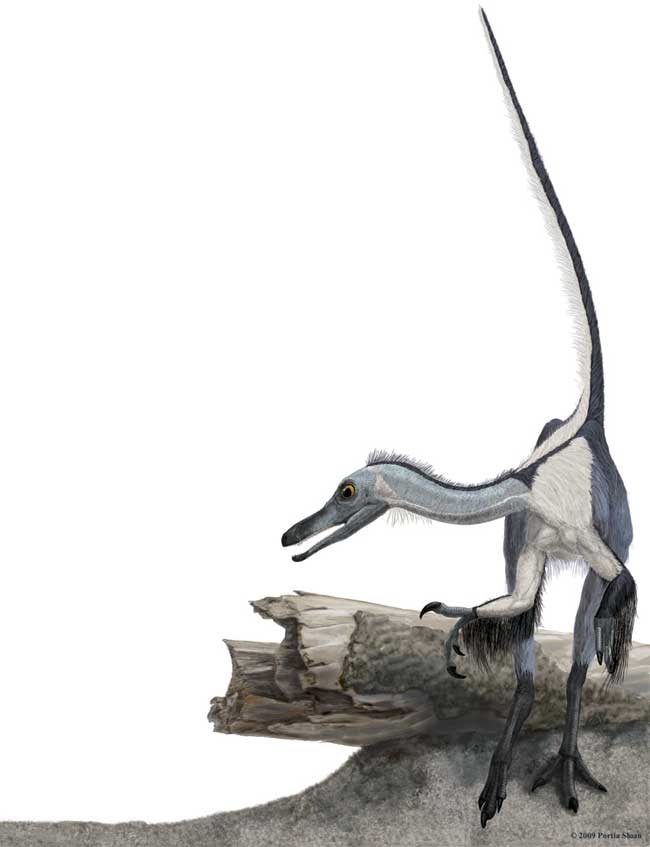Clawed Dinosaur Most Primitive of its Kind

A feathered dinosaur likely used its tiny, serrated teeth and oversized claw to snag termites and other small prey in what is now northwestern China, some 160 million years ago.
Its remains were discovered in 2004 in the Xinjiang Autonomous Region. But it wasn't until recently the fossil was found to be a new species called Haplocheirus sollers (meaning "simple, skillful hand"). When alive, the bipedal meat-eater would have been nearly 7 feet long (2 meters) and weighed 33 pounds (15 kg).
H. sollers is a member of Alvarezsauridae, a bizarre group of bird-like dinosaurs with a large claw on the hand and stubby, powerful arms. Until now the earliest evidence of a member of the group dated back some 85 million years, according to study researcher Jonah Choiniere of George Washington University.
"Haplocheirus is a transitional fossil, because it shows an early evolutionary step in how the bizarre hands of later alvarezsaurs evolved from earlier predatory dinosaurs," Choiniere said.
So its features were in between those of more advanced alvarezsauroids and primitive ones. The advanced alvarezsauroids had a single claw on the hand that was at least twice as long and four to five times as wide as its other claws. In addition, these dinosaurs were equipped with smooth teeth that appeared analogous to anteaters, and so scientists think they dug for insects like termites. The newly discovered animal has a claw about 2 inches long (5 cm), or 1.5 times as long as other claws and about twice as wide, or under an inch.
"When the alvarezsauroids were initially discovered only about 15 years ago the prevailing hypothesis was that they were birds – a lineage within birds that had lost flight ability," Choiniere told LiveScience. And while evidence from South America had suggested otherwise, he said those fossils were not complete.
"And so what Haplocheirus shows is really that alvarezsauroids are not birds, but it pushes them further down the evolutionary tree." The researchers would now place this dinosaur group near the stem of the group that includes both birds and their close theropod relatives, like Tyrannosaurus rex.
Get the world’s most fascinating discoveries delivered straight to your inbox.
- Tiny Dino Fed on Termites
- Avian Ancestors: Dinosaurs That Learned to Fly
- Birds of Prey: Spot Today's Dinosaurs
Jeanna Bryner is managing editor of Scientific American. Previously she was editor in chief of Live Science and, prior to that, an editor at Scholastic's Science World magazine. Bryner has an English degree from Salisbury University, a master's degree in biogeochemistry and environmental sciences from the University of Maryland and a graduate science journalism degree from New York University. She has worked as a biologist in Florida, where she monitored wetlands and did field surveys for endangered species, including the gorgeous Florida Scrub Jay. She also received an ocean sciences journalism fellowship from the Woods Hole Oceanographic Institution. She is a firm believer that science is for everyone and that just about everything can be viewed through the lens of science.


